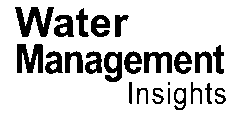The global water industry stands at a crossroads, with wastewater treatment processes emerging as both a significant source of greenhouse gases and a critical focal point for innovation. Methane, a byproduct of these processes, poses a substantial climate challenge due to its warming potential, which is 84 times greater than carbon dioxide over 20 years. However, technologies that can mitigate these emissions offer an opportunity to accelerate progress toward climate targets. Thames Water’s recent trial of the ELOVAC®-P vacuum degassing system at Riverside Sewage Treatment Works (STW) exemplifies this potential, demonstrating how targeted interventions can transform sludge management and drive the sector toward net zero emissions.
The wastewater treatment and bioresource sector’s contribution to methane emissions, particularly from anaerobic digestion processes, has long been a concern. While biogas is typically captured for energy recovery, residual methane often escapes during downstream sludge handling, exacerbating greenhouse gas emissions. This leakage not only undermines the environmental benefits of green energy generation but also poses a challenge to meeting compliance criteria such as the Green Gas Support Scheme (GGSS). Riverside STW, with its thermally hydrolysed sludge and high biogas yield, is a prime example of this dilemma. The site’s high phosphorus levels further complicate operations, leading to issues like struvite scaling, inefficient dewatering, and high polymer consumption.
Enter the ELOVAC®-P system, developed by ELIQUO Technologies. This innovative technology employs vacuum degassing to remove entrapped and dissolved gas, including methane, from digested sludge. By reducing dissolved gas and microbubbles, it prevents methane emissions during subsequent sludge processing and storage. Additionally, the system doses MgCl₂ to facilitate phosphate precipitation, improving sludge dewatering and reducing struvite formation in downstream equipment. The trial at Riverside STW was designed to address these issues head-on, aligning with Thames Water’s net zero ambitions and the broader industry’s goals to reduce emissions.
The trial at Riverside STW was meticulously planned and executed in three key phases. Initially, the system was connected downstream from aerated sludge buffer tanks, allowing for an easy start but limiting capture efficiency due to prior methane escape during aeration. In the optimised configuration, sludge was redirected directly from the digesters to the ELOVAC® unit, bypassing aeration tanks to maximise methane capture. The final phase involved a sophisticated logistics operation where sludge from Crossness STW was processed at ELOVAC in Riverside and transported back for dewatering, allowing for performance comparisons between different sludge types and dewatering technologies.
The results were nothing short of transformative. The ELOVAC®-P system captured an average of 545 litres of gas per cubic meter of sludge, with methane comprising approximately 25%. Over a 20-year timeframe, this represents a reduction of 2,704 metric tons of CO₂ equivalent annually at Riverside. These avoided emissions are equivalent to the annual impact of driving over 62,000 times from Riverside to ELIQUO Hydrok’s facility in Cornwall. Reducing methane emissions offers an immediate and powerful climate benefit, aligning with global initiatives like the COP26 Global Methane Pledge, which targets a 30% reduction in methane emissions by 2030.
The system’s benefits extended beyond methane capture. By combining vacuum degassing with MgCl₂ dosing, the ELOVAC®-P achieved phosphate removal efficiencies of up to 90%, reducing phosphorus concentrations in sludge to below 50 mg/L. This reduction mitigates struvite scaling and improves sludge dewaterability, enhancing operational reliability. Dewatering efficiency was also significantly improved, with treated sludge achieving up to 32% dry solids compared to 24-27% for untreated sludge. Polymer requirements dropped by 39%, from 18 kg/TDS to 11 kg/TDS, reducing chemical costs. Lower suspended solids in filtrate were observed, improving overall sludge handling, and reducing phosphorus (PO₄-P) concentrations in the filtrate, cutting the phosphorus load returned to the head of the treatment works. This alleviates the burden on biological and chemical phosphorus removal processes, lowering treatment costs.
The cross-site validation tests with sludge imported from Crossness STW further validated ELOVAC®-P’s benefits across different sludge types and dewatering technologies. The trial demonstrated equally strong results, highlighting the system’s adaptability and reliability in varied settings. These results not only reinforced the versatility of the ELOVAC®-P system but also demonstrated its ability to deliver consistent performance improvements at different facilities with varying setups. By confirming its efficacy at multiple sites, the trial highlighted the potential for Thames Water to replicate these benefits across its wider network.
The implications for the water industry’s net zero goals are profound. The ELO
